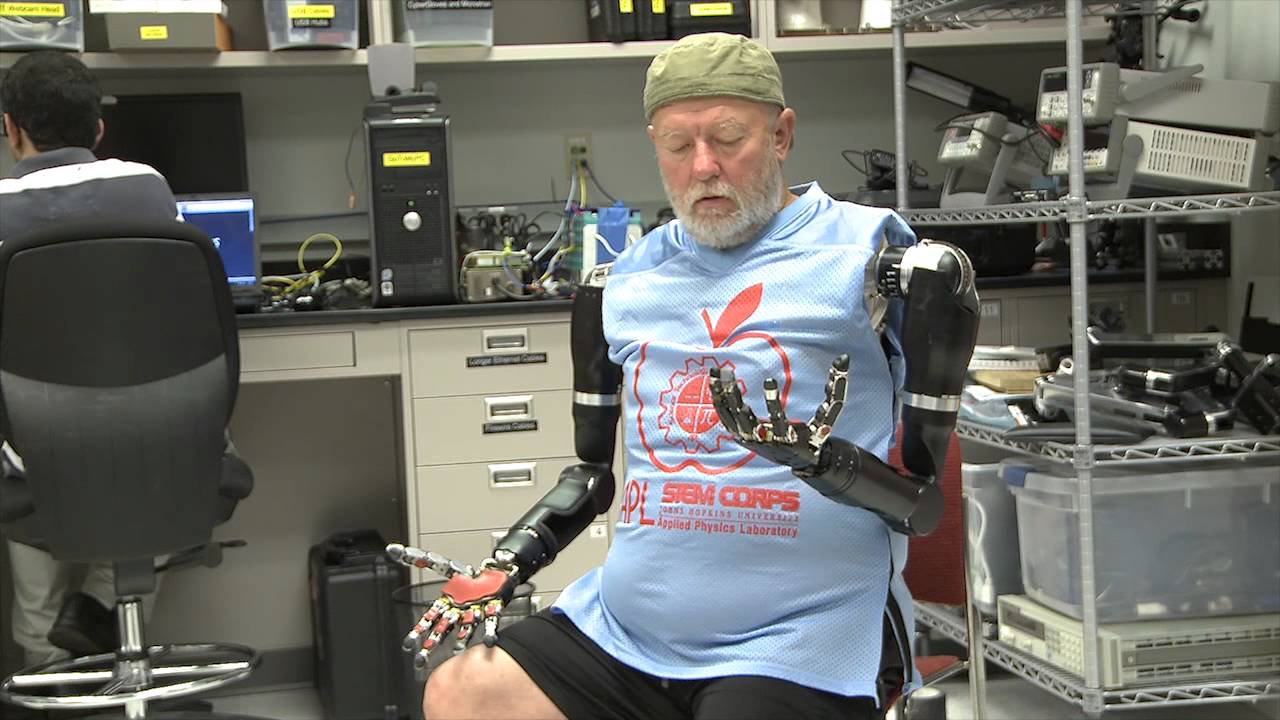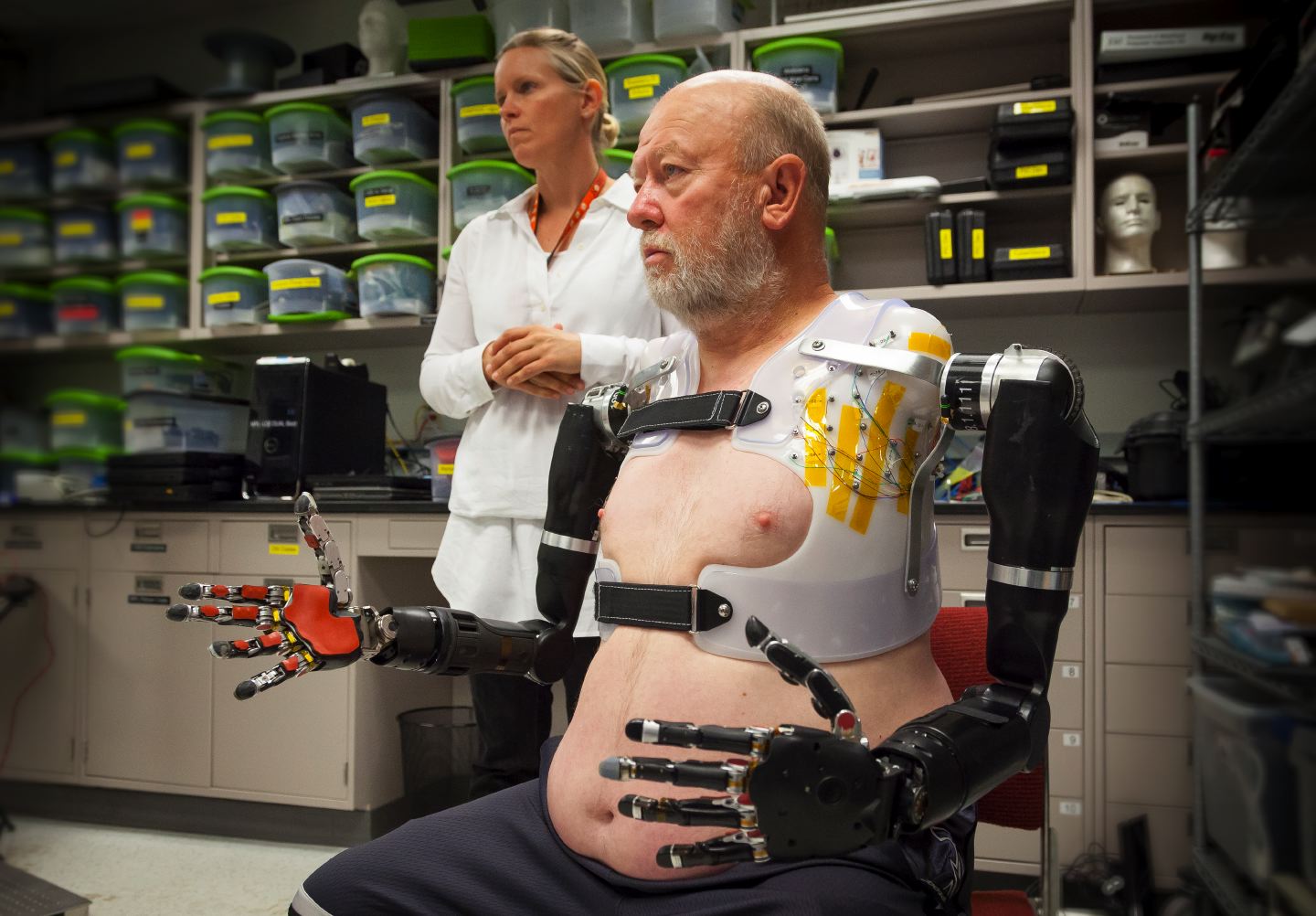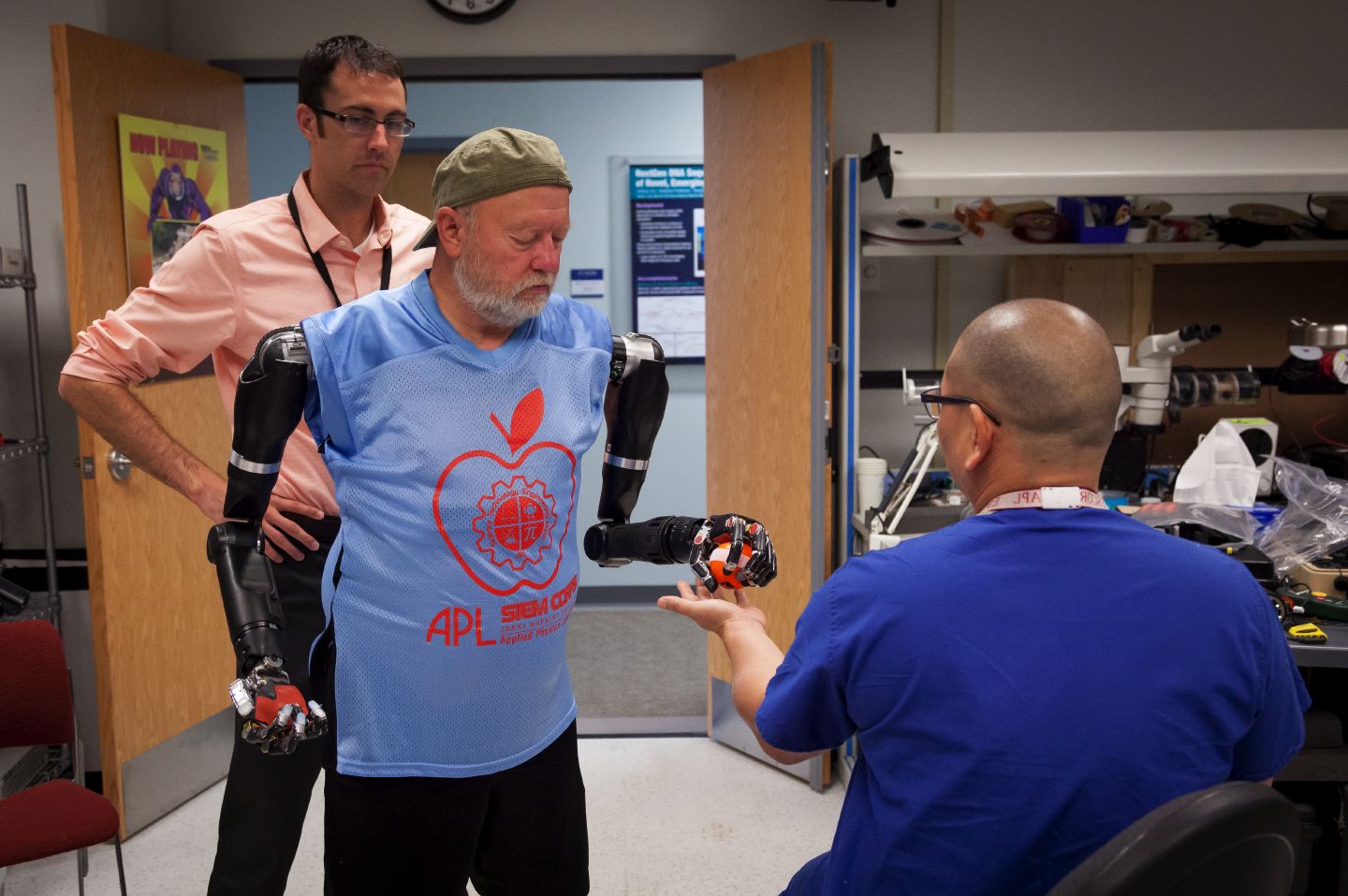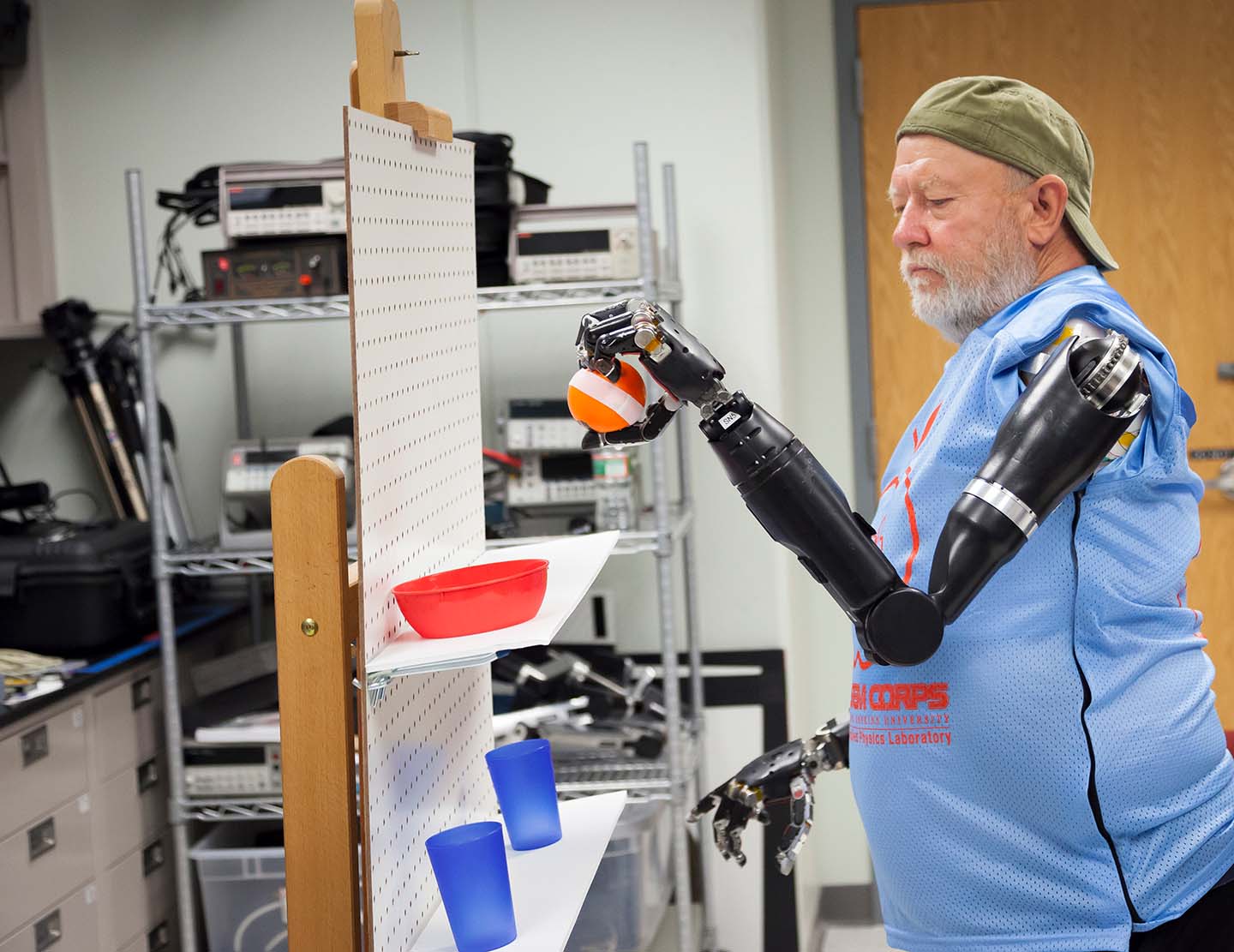Press Release
Amputee Makes History with APL’s Modular Prosthetic Limb
A Colorado man made history at the Johns Hopkins University Applied Physics Laboratory (APL) this summer when he became the first bilateral shoulder-level amputee to wear and simultaneously control two of the Laboratory’s Modular Prosthetic Limbs. Most importantly, Les Baugh, who lost both arms in an electrical accident 40 years ago, was able to operate the system by simply thinking about moving his limbs, performing a variety of tasks during a short training period.
Baugh was in town for two weeks in June as part of an APL-funded research effort to further assess the usability of the MPL, developed over the past decade as part of the Revolutionizing Prosthetics Program. Before putting the limb system through the paces, Baugh had to undergo a surgery at Johns Hopkins Hospital known as targeted muscle reinnervation.
“It’s a relatively new surgical procedure that reassigns nerves that once controlled the arm and the hand,” explained Johns Hopkins Trauma Surgeon Albert Chi, M.D. “By reassigning existing nerves, we can make it possible for people who have had upper-arm amputations to control their prosthetic devices by merely thinking about the action they want to perform.”



